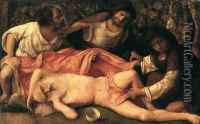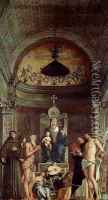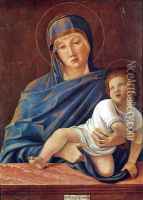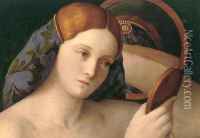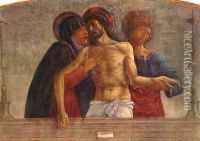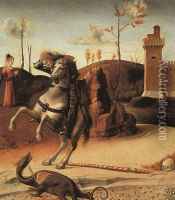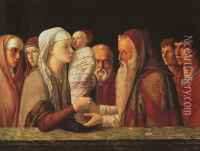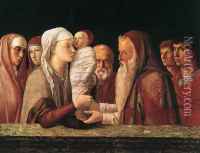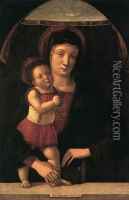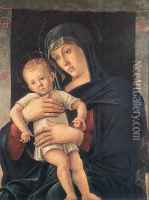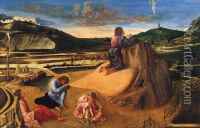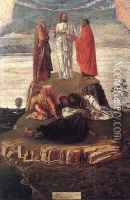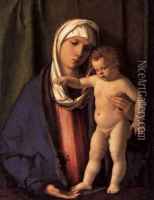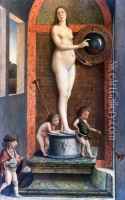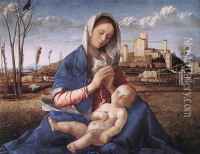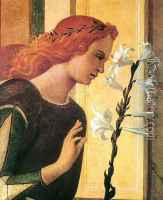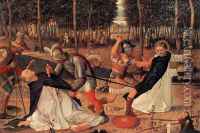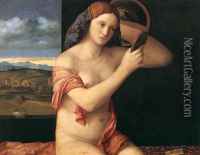Giovanni Bellini Paintings
Giovanni Bellini was an Italian Renaissance painter, often considered to bring about a revolution in Venetian painting, moving it towards a more sensuous and coloristic style. Born in Venice, Italy, circa 1430, he was part of the Bellini family of painters; his father Jacopo was a painter, and he had two famous brothers, Gentile and Filippo Bellini. Giovanni was also the brother-in-law of Andrea Mantegna, another prominent Italian artist of the time. Through his family connections and his own skill, Giovanni played a pivotal role in the Venetian art scene. Bellini's early work shows the influence of his brother-in-law, Mantegna, as well as the style of the Florentine and Paduan schools. However, as he matured, Bellini developed a more personal style that emphasized the use of color and light to create depth and emotion, which became a hallmark of Venetian painting. He was a pioneer in the use of oil paint, a medium that allowed him to achieve greater luminosity and texture in his work compared to the tempera paint that was commonly used at the time. Over the course of his long career, Bellini's style continued to evolve. He became known for his altarpieces, religious panels, and portraits, characterized by their serene humanism and delicate use of color. His most famous works include the 'San Zaccaria Altarpiece', the 'San Giobbe Altarpiece', and 'The Feast of the Gods', which was completed by his pupil, Titian, after his death. Bellini's influence extended well beyond his lifetime, as he served as a teacher to the next generation of Venetian painters, including Titian and Giorgione. Giovanni Bellini died in 1516, leaving behind a legacy that cemented him as one of the greatest painters of the Venetian Renaissance.
